Walther PPK/S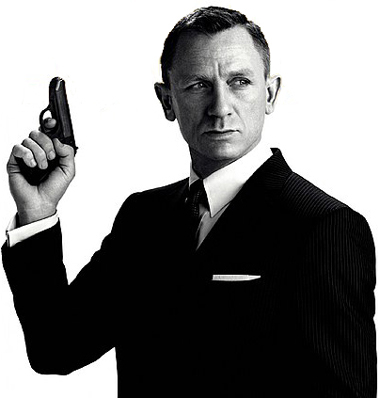 |
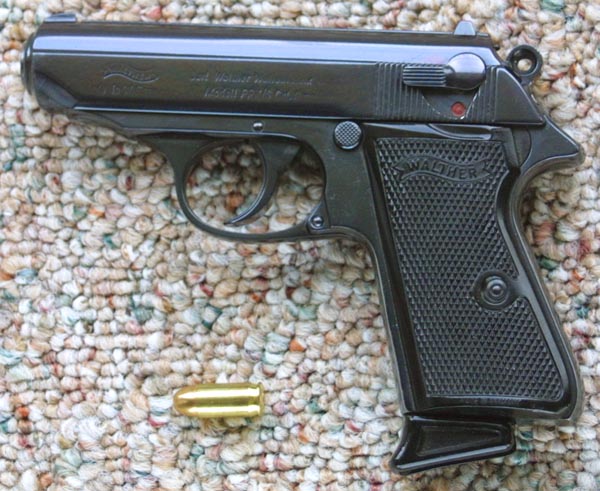
|
||||
| Dimensions | Barrel Length | Weight | Caliber | Action Type | Magazine Capacity |
| 6.1"x | 3.27" | 23oz | .380 | D.A. Semi Auto | 7+1 |
Bond, James Bond
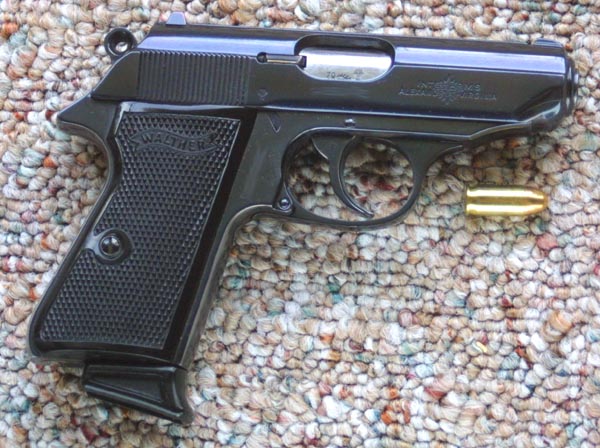 An aura seems to surround some guns, which often
has little bearing on the capabilities of the weapon itself. In the fifties,
the popularity of cowboy movies, and T.V. shows brought a resurgence of interest
in the legion of obsolete .45 Peacemakers which had been gathering dust in
gun shops for decades. In the sixties, a generation of shooters who had grown
up watching detective movies in the forties and fifties all wanted a .38
snub-nose like the ones their hard boiled heroes toted. In the seventies gun
shops could not keep the S&W M-29 revolver in stock after Dirty Harry
turned the gun into a legend.
An aura seems to surround some guns, which often
has little bearing on the capabilities of the weapon itself. In the fifties,
the popularity of cowboy movies, and T.V. shows brought a resurgence of interest
in the legion of obsolete .45 Peacemakers which had been gathering dust in
gun shops for decades. In the sixties, a generation of shooters who had grown
up watching detective movies in the forties and fifties all wanted a .38
snub-nose like the ones their hard boiled heroes toted. In the seventies gun
shops could not keep the S&W M-29 revolver in stock after Dirty Harry
turned the gun into a legend. The Walther PPK was carried by no less a man than James Bond. With such a sterling endorsement the gun could not help but become an icon. In the actual Ian Flemming novels, James Bond carried a Berretta .25; but for some reason the Walther was thought to be a better choice for the movies. Perhaps it was thought to be more modern. The Bond gun was in 7.65 caliber (32auto), which would not be the choice of most American shooters, due to it's low power levels, and uncertain stopping power.
As all Bond fans know, this gun was first presented to Sean Connery in Dr. No, by a major who was latter to be developed into the Character Q in the series. This was a bit of an update on the original novel series, set in the thirties, written by Flemming, in which Bond carried a Beretta concealed on his person, and a big
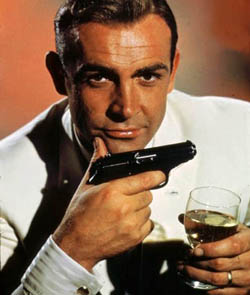 45 in his Bentley. The Bentley
was updated to an Aston, the Beretta to a PPK, and the 45 seems to have disappeared
all together.
45 in his Bentley. The Bentley
was updated to an Aston, the Beretta to a PPK, and the 45 seems to have disappeared
all together. This gun was used in the first 17 James Bond movies, up until the introduction of the new Walther P-99 as primary armament in Tomorrow Never Dies. After being retired for a short time, the PPK was then reintroduced to Daniel Craig. As such, the PPK was carried by all six of the "official" James Bonds. I suppose it's retirement was overdue. In 1963, when it was first introduced into the series, the PPK was a cutting edge weapon, with fairly sophisticated features, and a bit of an exotic feel, when compared to the standard revolvers and army pistols floating around. It also held some of the aura of German weaponry, which was a sort of an acknowledgment of the German war machine of W.W.II. Still, time passes. Pistols today are plastic, have double column magazines, lasers, tritium sites, and all sorts of other refinements. The new age
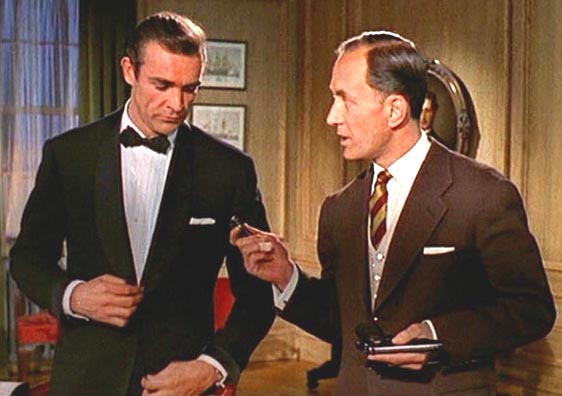 Bond no longer wore a Rolex, drove an Aston Martin, or carried a PPK.
Bond no longer wore a Rolex, drove an Aston Martin, or carried a PPK.Yet in the retro spirit of the times, the PPK has come back, and is being carried by Daniel Craig in the new Bond movies. This was inevitable, as the PPK has become iconic, and is intimately linked with the James Bond character. Rolex and Aston Martin are also making appearances in some of the new movies.
Considered to be a German gun, the PPK was also made in France and the U.S. Knock offs were made in Hungary, Czechoslovakia, and Russia, and there is no shortage of copies and imitations. The gun itself is very old world and refined, much like the character who packed it. Developed in the twenties, it was one of the first double action pistols, and was used by the German police.
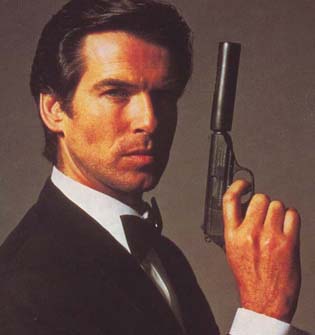 Production of the PP (Police Pistol) model, with
a longer barrel and grip, began in 1929. The Shortened PPK (Police Pistol
Short) version was introduced in 1931. The action of the PPK was the basis
upon which the latter P-38 was developed. In order to overcome import restrictions,
and to help offset German labor costs, which were getting pretty high, the
PPK began to be manufactured in the United States in 1978, by Ranger Manufacturing
in Gadsen, Alabama. A stainless version was soon offered by the American
manufacturer. Present day American production guns are made under license,
by Smith and Wesson.
Production of the PP (Police Pistol) model, with
a longer barrel and grip, began in 1929. The Shortened PPK (Police Pistol
Short) version was introduced in 1931. The action of the PPK was the basis
upon which the latter P-38 was developed. In order to overcome import restrictions,
and to help offset German labor costs, which were getting pretty high, the
PPK began to be manufactured in the United States in 1978, by Ranger Manufacturing
in Gadsen, Alabama. A stainless version was soon offered by the American
manufacturer. Present day American production guns are made under license,
by Smith and Wesson.My gun was made in Germany and imported into the U.S. in the seventies by Interarms. The Walther PPK could not be brought into this country because import restrictions, introduced in the notorious gun control act of 1968, prohibited importation of guns that were under a certain size. Walther solved this problem by mating a PPK slide to a PP frame, which held one more round and made the gun tall enough to be acceptable. This gun was called the PPK/S, and happens to be the model I own. You can see the Interarms mark towards the front of the slide, on the right hand side of the gun. The story of Interarms, in Alexandria Virginia, and their relationship with the U.S. intelligence community is a fascinating tale in it's own right.
The PPK has a terrible, long 17 pound trigger pull in double action, although it's single action pull is quite good. The action is a straight blowback with no lock up. My particular gun fires the. 380 cartridge which is a sufficient, but marginal man stopper. A photo showing the 380 alongside a 9mm is to the right. While this is not the same as the .32 auto version carried by Bond, I could not justify getting a gun chambered in such an unsuitable caliber (whatever Q might have to say). Like most smaller handguns, the PPK has a fair amount of perceived recoil, making it surprisingly hard to shoot, considering the power of it's cartridge.
The
By comparison, the .32 auto drives a 65 grain bullet at 925 fps. The round never really took off, here in America; but is quite popular in Europe. The Walther PPK carried by hitler was in 32 auto, and is the gun he is supposed to have killed himself with, as an enhancement to cyanide. So the gun and the cartridge have a history far preceding James Bond. The cartridge was designed in 1899 by John M Browning.
The thinness of the PPK makes it conceal well, so it would seem to be a natural for concealed carry. The fit and finnish are excellent as they should be considering the cost. The sights are merely adequate, but the whole gun has a very satisfying, high quality feel to it. In truth, for the demands of the little 380 round, the PPK is probably built much more heavily than it needs to be. There is a loaded chamber indicator which protrudes just above the hammer when a round is chambered. This is a feature that I never cared for; but it is there for those who prefer such things. It protrudes just above the lanyard style hammer, and can thus be felt as well as seen. The slide stays back after the last shot is fired, but there is no slide release; the slide must be pulled back after a new magazine is inserted.
The Walther PPK is a class act, that points well, handles comfortably, and is fairly accurate, considering the sights, trigger, and size of the piece. Overall the Walther is a very nice gun, and although I own guns which I consider to be much more capable, James Bond didn't carry any of them.
Disassembly and cleaning
| Disassembly of the PPK is simplicity itself. After
removing the magazine, and checking the chamber, you pull down the trigger
guard, which doubles as a takedown lever. |
|
| With the trigger guard down, pull back on the slide. |
|
| With the slide all of the way back, simply pull
up to remove. |
|
| The gun is now ready for cleaning and lubrication. |
